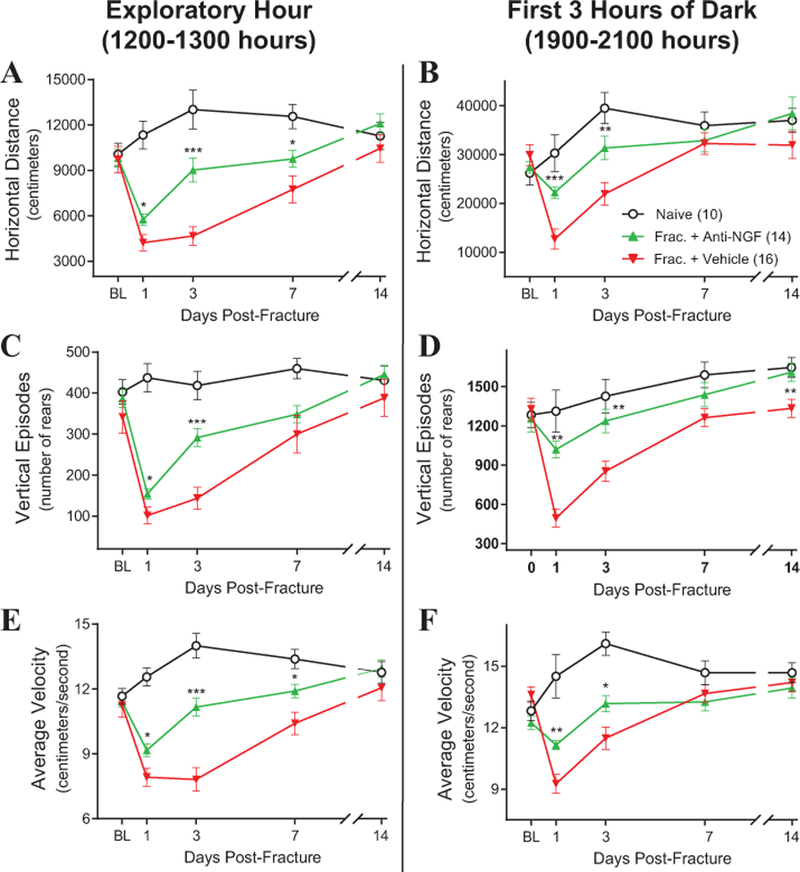Figure 4. Changes in horizontal distance, vertical rears and velocity of travel at increasing times in naïve mice, mice with fracture + vehicle and mice with fracture + anti-NGF.

Fracture of the femur induces a marked decline in horizontal distance traveled (A,B), vertical rearing episodes (C,D) and average velocity of horizontal travel (E,F) at the times during the day (A,C,E) & night (B,D,F) when the mice are normally most active. These declines peak at day 1 post-fracture and return to naïve levels by day 14 when the callus has significantly stabilized the fracture site. Note that anti-NGF partially reverses this decline in activity at days 1, 3, and in some cases at day 7 post-fracture. However, by day 14, differences in the activity measures between the three groups have largely disappeared. Statistical significant differences between Fracture + Vehicle animals vs Fracture + Anti-NGF animals during the initial exploratory hour (A, C, E) and the first 3 hours of dark activity (B, D, F) for each day are indicated by *, **, *** = P< 0.05, 0.01 and 0.001, respectively.
